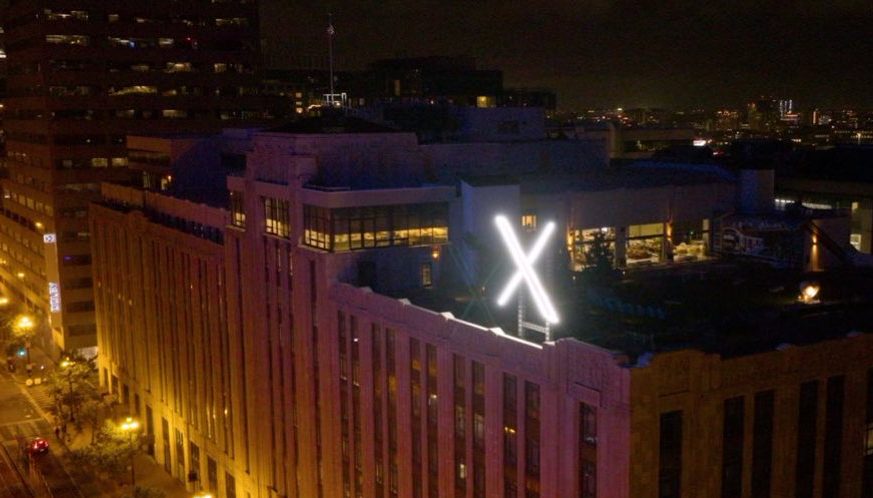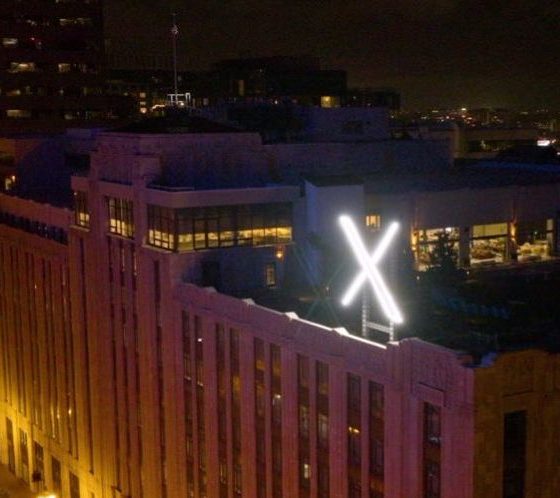

News
Elon Musk’s X gets apology from brand safety rating firm DoubleVerify over misreported data
Elon Musk’s X, the social media platform formerly known as Twitter, has received an apology from brand safety measurement rating firm DoubleVerify (DV). As per DV, it had discovered a graphical error in X’s Brand safety Rate in its Pinnacle dashboard that resulted in the social media platform being listed with a lower score than intended. X’s erroneous data was displayed to advertisers for several months.
DV noted that from October 24, 2023, to March 14, 2024, its Pinnacle dashboard displayed incorrect brand safety data to advertisers. As noted in a Variety report, in some cases, X’s scores were displayed to be as low as 70%, despite the platform’s actual scores being 99.99%. This error likely caused X quite a good number of advertisers.
DoubleVerify CEO Mark Zagorski addressed the issue in a letter to the company’s clients. In the letter, Zagorski noted that the error has been fixed. He also noted that DoubleVerify is taking full responsibility for the misreported X data.
X’s Brand Safety Rate exceeds 99% according to third-party analysis from DoubleVerify and Integral Ad Science.
DoubleVerify, a company responsible for providing Brand Safety measurements to major advertisers, has been displaying an erroneous graphical error of X's Brand Safety…— Business (@XBusiness) April 12, 2024
Valued DV Customer:
DoubleVerify recently discovered a graphical error in the display of X’s Brand Safety Rate in DV’s Pinnacle dashboard that resulted in displaying an incorrect, lower rate. Specifically, Double Verify’s dashboard incorrectly mirrored the Brand Suitability Rate for your campaign onto the Brand Safety Rate in the summary graphic in Pinnacle. The underlying data available in DV Pinnacle was accurate; only the graphical visualization was not representative of the Brand Safety Rate. This display error occurred over four and a half months from October 24, 2023 to March 14th, 2024, when it was corrected by DV. All current and retroactive Brand Safety data for X is now correctly represented in Pinnacle. The display error was not present in any other area in the Ul, including the Incident Reporting and the Rollover Data Detail.
Based on DoubleVerify’s metrics, X’s Brand Safety Rate across all campaigns we measured exceeded 99.99% from October 2023 to the present. This means that X’s Brand Safety Rate exceeds global benchmarks for brand safety, based on DV’s global industry data.
Double Verify takes measurement accuracy and reporting seriously. We take full responsibility for the inaccurate visual representation of X’s Brand Safety Rate within our dashboard that displayed an inaccurate and lower Brand Safety Rate.
We apologize for any confusion this may have caused to X and to our customers in the course of reviewing your campaign performance on X. DV remains committed to maintaining the highest standards of accuracy and transparency in our data.
Double Verify is working closely with X to ensure that all future reports reflect the accurate Brand Safety performance of campaigns run on X’s platform. We also are conducting a thorough review of our processes and systems to ensure this issue does not occur in the future.
Should you wish to have a direct conversation with X regarding your reporting, we would be happy to relay your contact information to your X account lead and facilitate a meeting. Our team at Double Verify remains committed to maintaining trust and confidence in our platform, and would welcome a direct follow up with you should you wish to discuss further.
Best regards,
Mark Zagorski
CEO DoubleVerify
X owner Elon Musk expressed his appreciation to the brand safety firm’s cooperation into the matter. As noted by Musk, X’s brand safety is actually very good if measured correctly. “Thank you DoubleVerify for correcting your mistake regarding brand safety on this platform. When measured accurately, brand safety on ? is extremely good,” Musk wrote.
Don’t hesitate to contact us with news tips. Just send a message to simon@teslarati.com to give us a heads up.

News
Tesla FSD fleet is nearing 7 billion total miles, including 2.5 billion city miles
As can be seen on Tesla’s official FSD webpage, vehicles equipped with the system have now navigated over 6.99 billion miles.

Tesla’s Full Self-Driving (Supervised) fleet is closing in on almost 7 billion total miles driven, as per data posted by the company on its official FSD webpage.
These figures hint at the massive scale of data fueling Tesla’s rapid FSD improvements, which have been quite notable as of late.
FSD mileage milestones
As can be seen on Tesla’s official FSD webpage, vehicles equipped with the system have now navigated over 6.99 billion miles. Tesla owner and avid FSD tester Whole Mars Catalog also shared a screenshot indicating that from the nearly 7 billion miles traveled by the FSD fleet, more than 2.5 billion miles were driven inside cities.
City miles are particularly valuable for complex urban scenarios like unprotected turns, pedestrian interactions, and traffic lights. This is also the difference-maker for FSD, as only complex solutions, such as Waymo’s self-driving taxis, operate similarly on inner-city streets. And even then, incidents such as the San Francisco blackouts have proven challenging for sensor-rich vehicles like Waymos.
Tesla’s data edge
Tesla has a number of advantages in the autonomous vehicle sector, one of which is the size of its fleet and the number of vehicles training FSD on real-world roads. Tesla’s nearly 7 billion FSD miles then allow the company to roll out updates that make its vehicles behave like they are being driven by experienced drivers, even if they are operating on their own.
So notable are Tesla’s improvements to FSD that NVIDIA Director of Robotics Jim Fan, after experiencing FSD v14, noted that the system is the first AI that passes what he described as a “Physical Turing Test.”
“Despite knowing exactly how robot learning works, I still find it magical watching the steering wheel turn by itself. First it feels surreal, next it becomes routine. Then, like the smartphone, taking it away actively hurts. This is how humanity gets rewired and glued to god-like technologies,” Fan wrote in a post on X.
News
Tesla starts showing how FSD will change lives in Europe
Local officials tested the system on narrow country roads and were impressed by FSD’s smooth, human-like driving, with some calling the service a game-changer for everyday life in areas that are far from urban centers.

Tesla has launched Europe’s first public shuttle service using Full Self-Driving (Supervised) in the rural Eifelkreis Bitburg-Prüm region of Germany, demonstrating how the technology can restore independence and mobility for people who struggle with limited transport options.
Local officials tested the system on narrow country roads and were impressed by FSD’s smooth, human-like driving, with some calling the service a game-changer for everyday life in areas that are far from urban centers.
Officials see real impact on rural residents
Arzfeld Mayor Johannes Kuhl and District Administrator Andreas Kruppert personally tested the Tesla shuttle service. This allowed them to see just how well FSD navigated winding lanes and rural roads confidently. Kruppert said, “Autonomous driving sounds like science fiction to many, but we simply see here that it works totally well in rural regions too.” Kuhl, for his part, also noted that FSD “feels like a very experienced driver.”
The pilot complements the area’s “Citizen Bus” program, which provides on-demand rides for elderly residents who can no longer drive themselves. Tesla Europe shared a video of a demonstration of the service, highlighting how FSD gives people their freedom back, even in places where public transport is not as prevalent.
What the Ministry for Economic Affairs and Transport says
Rhineland-Palatinate’s Minister Daniela Schmitt supported the project, praising the collaboration that made this “first of its kind in Europe” possible. As per the ministry, the rural rollout for the service shows FSD’s potential beyond major cities, and it delivers tangible benefits like grocery runs, doctor visits, and social connections for isolated residents.
“Reliable and flexible mobility is especially vital in rural areas. With the launch of a shuttle service using self-driving vehicles (FSD supervised) by Tesla in the Eifelkreis Bitburg-Prüm, an innovative pilot project is now getting underway that complements local community bus services. It is the first project of its kind in Europe.
“The result is a real gain for rural mobility: greater accessibility, more flexibility and tangible benefits for everyday life. A strong signal for innovation, cooperation and future-oriented mobility beyond urban centers,” the ministry wrote in a LinkedIn post.
News
Tesla China quietly posts Robotaxi-related job listing
Tesla China is currently seeking a Low Voltage Electrical Engineer to work on circuit board design for the company’s autonomous vehicles.

Tesla has posted a new job listing in Shanghai explicitly tied to its Robotaxi program, fueling speculation that the company is preparing to launch its dedicated autonomous ride-hailing service in China.
As noted in the listing, Tesla China is currently seeking a Low Voltage Electrical Engineer to work on circuit board design for the company’s autonomous vehicles.
Robotaxi-specific role
The listing, which was shared on social media platform X by industry watcher @tslaming, suggested that Tesla China is looking to fill the role urgently. The job listing itself specifically mentions that the person hired for the role will be working on the Low Voltage Hardware team, which would design the circuit boards that would serve as the nervous system of the Robotaxi.
Key tasks for the role, as indicated in the job listing, include collaboration with PCB layout, firmware, mechanical, program management, and validation teams, among other responsibilities. The role is based in Shanghai.
China Robotaxi launch
China represents a massive potential market for robotaxis, with its dense urban centers and supportive policies in select cities. Tesla has limited permission to roll out FSD in the country, though despite this, its vehicles have been hailed as among the best in the market when it comes to autonomous features. So far, at least, it appears that China supports Tesla’s FSD and Robotaxi rollout.
This was hinted at in November, when Tesla brought the Cybercab to the 8th China International Import Expo (CIIE) in Shanghai, marking the first time that the autonomous two-seater was brought to the Asia-Pacific region. The vehicle, despite not having a release date in China, received a significant amount of interest among the event’s attendees.








